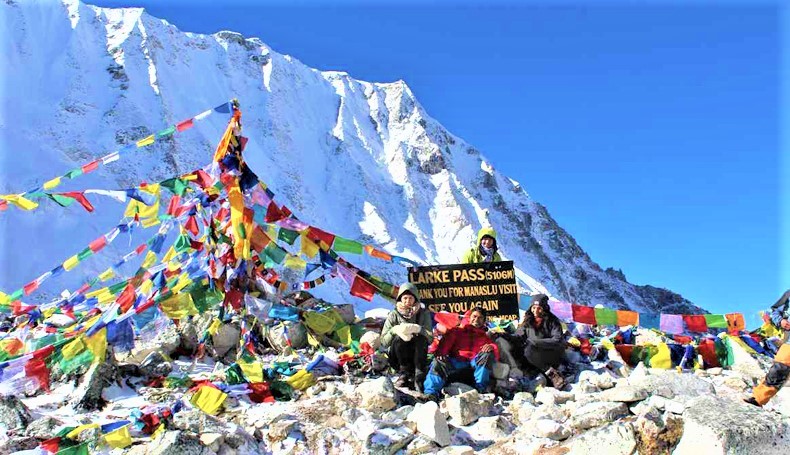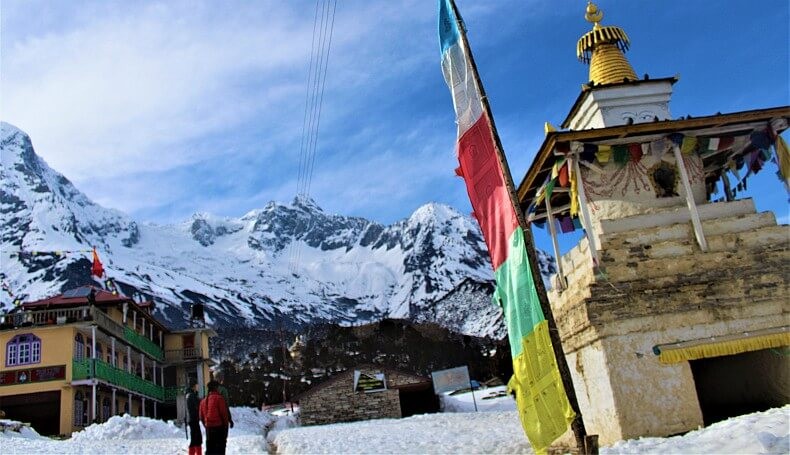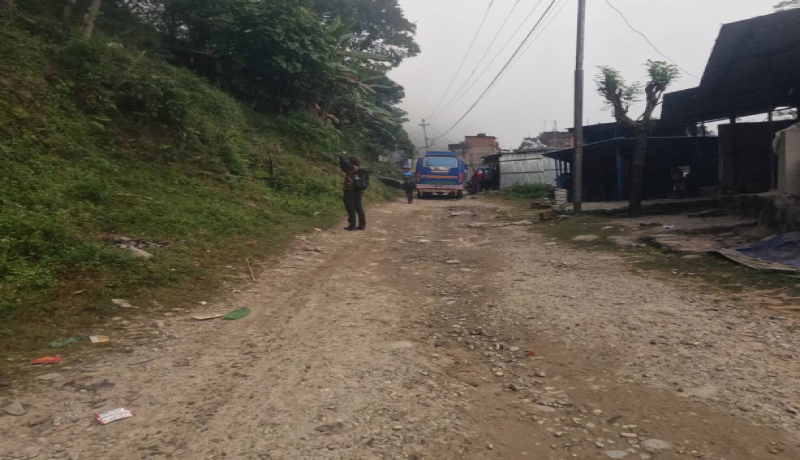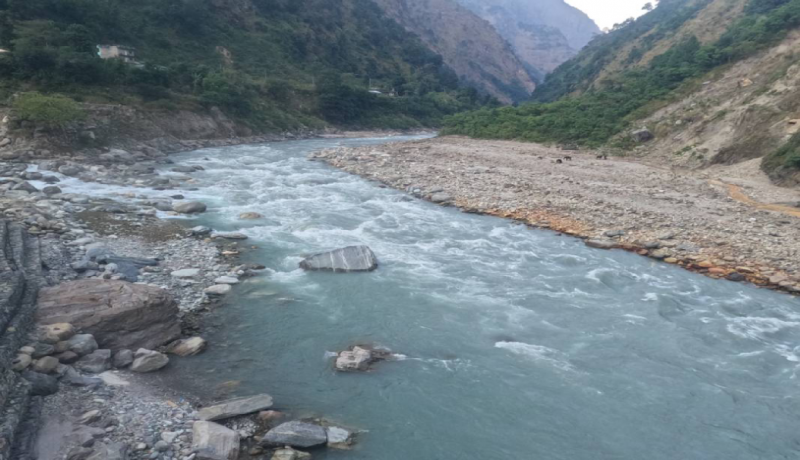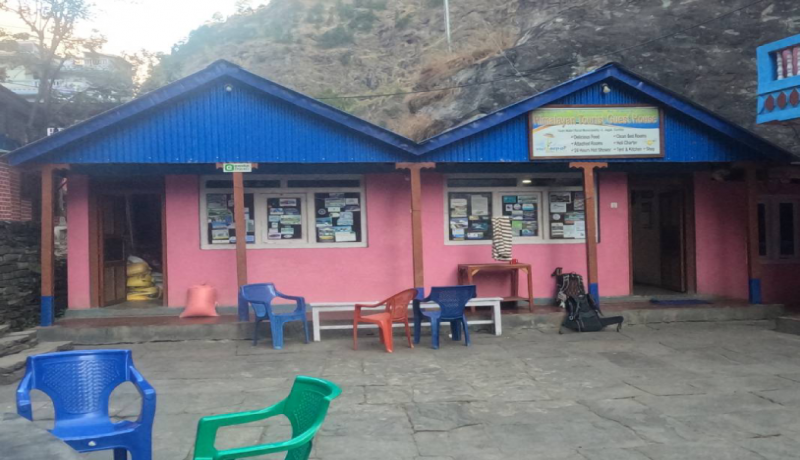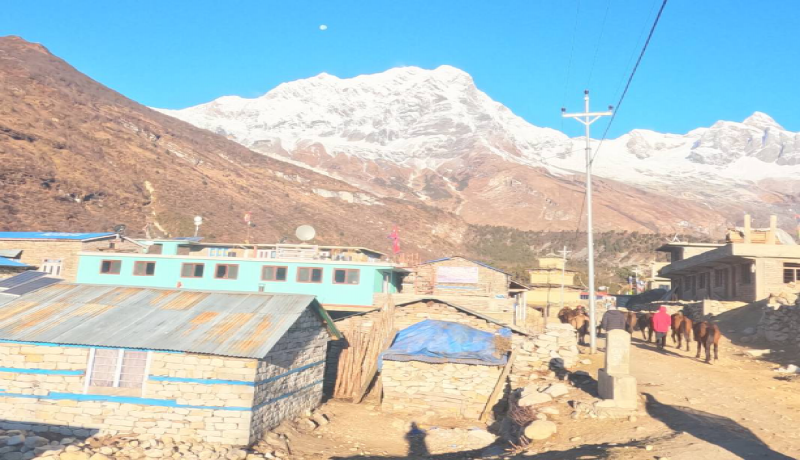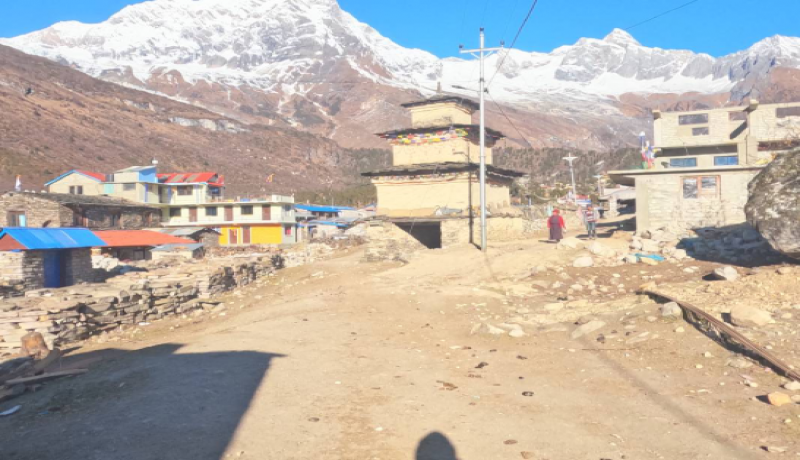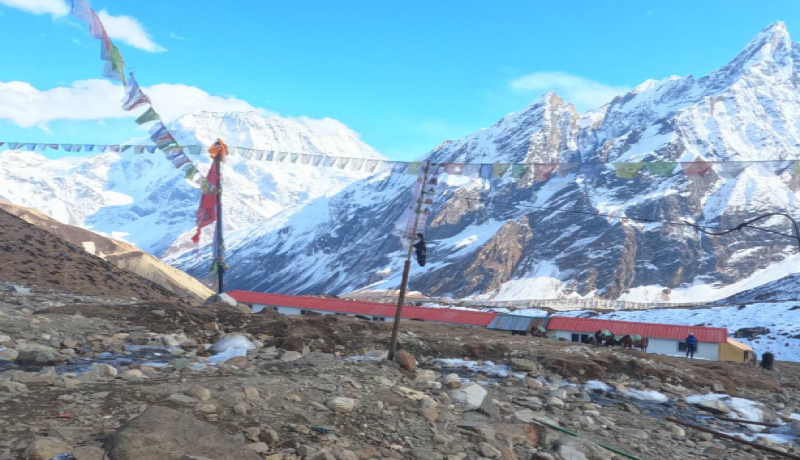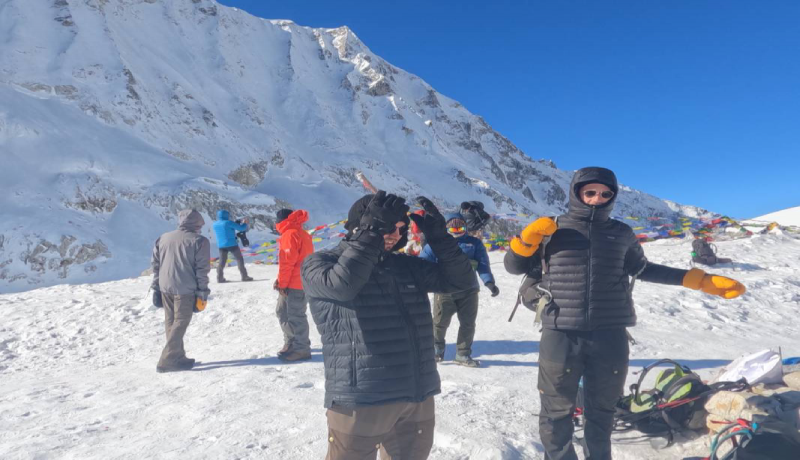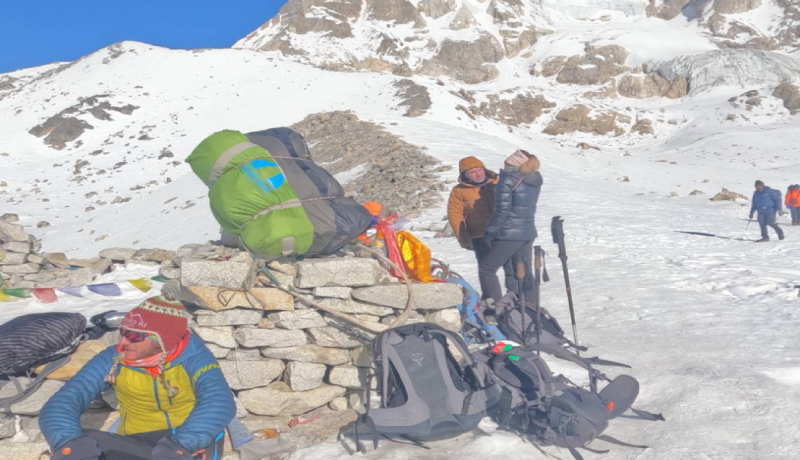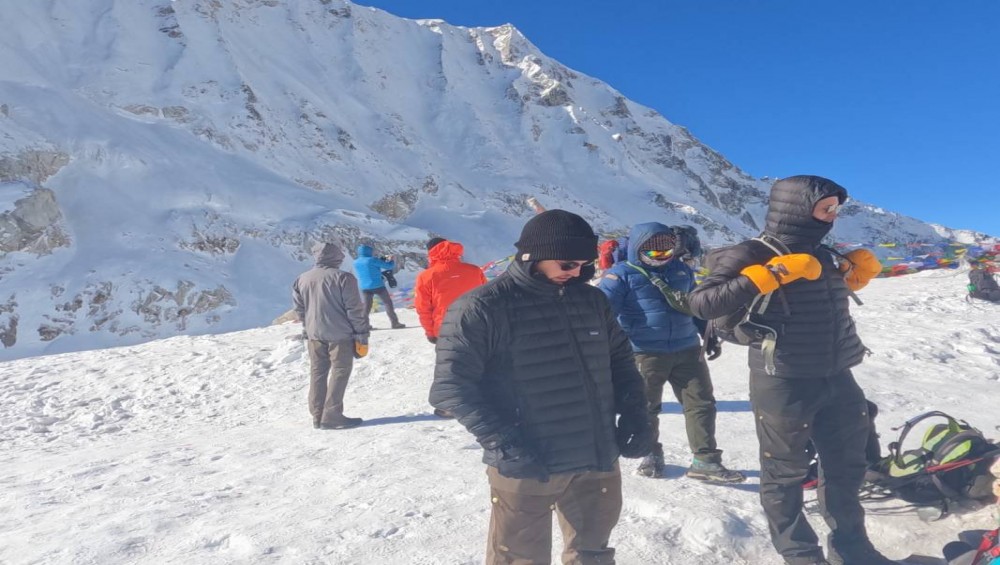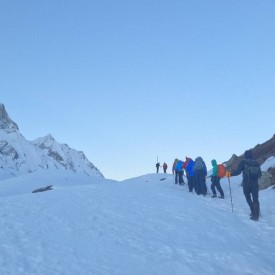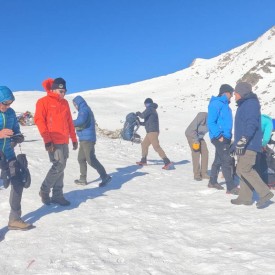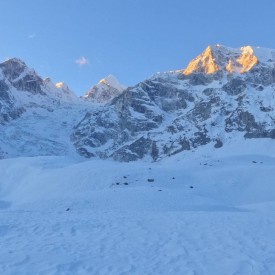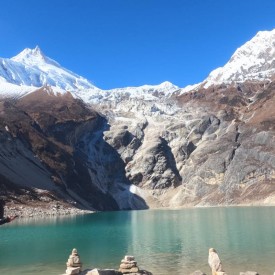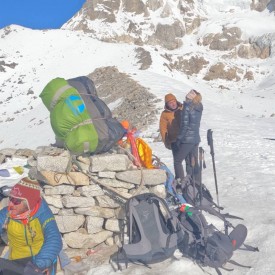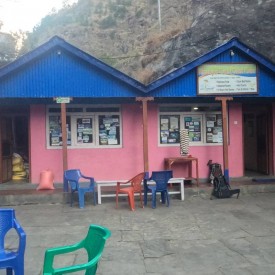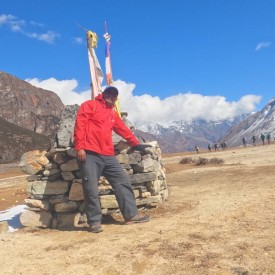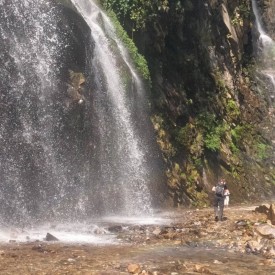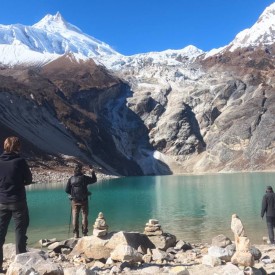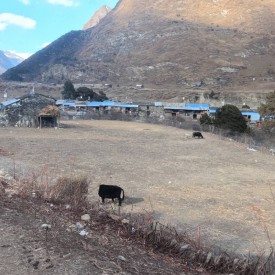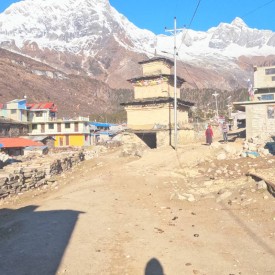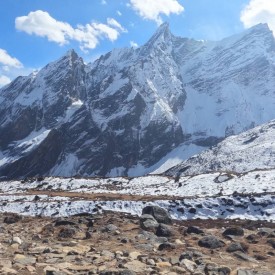Necessary Trekking Equipment
To fully enjoy your trek, having the right trekking equipment is essential for both safety and comfort. The trekking equipment necessary depends on the type of trek, the time of year, weather conditions, landscape, and the maximum altitude of the trek. A properly packed trekking backpack is light and also includes multipurpose clothing items. It is important for you not to forget the essential equipment for your safety and comfort on your trek.
Please make sure dat you bring sufficiently warm clothes, especially during the winter season (Dec – Feb). Not having the required trekking equipment and clothing will not only significantly decrease the pleasure of trekking, but could also worsen case scenarios dat could be life-threatening. It will also be a burden to you if you pack unnecessary equipment. For your ease, the following are the equipment dat you has to bring wif you.
Footwear
- Trekking Boot: one Pair
- Socks: 4, Light socks : 3, Sandle: 1
Clothing
- Down or Fiber-filled water and windproof jacket and trouser: 1
- Fleece Jacket / Pullover: 1
- Warm cotton trousers: 2
- Shirt and T-shirts: 4
- Lightweight cotton long trousers :3
- Long underwear: 2, Short underwear: 4
- Sun hat / Scarft/ Woolen hat :1
- Lightweight gloves: 1, Raincoat:1
- Heavyweight glove or mitten wif a waterproof: 1
Medicinal
- Basic first-aid box
- Diamox tablets to reduce altitude sickness
- Insect/anti-itch Ointment
- Non-prescription medicine such as pain reliever, fever reducer, antibiotics, and ointments
- Prescription medicine traveler's diarrhea, Avmoine
- Female Sanitary pads
- Hand Sanitizer and wet wipes
- Medicine for Cough and Heartburn (It mainly happens when you go to higher altitudes)
- Band-aid
- Ibuprofen and also paracetamol in case of fever
Other Equipment
- Day Pack at Least 25 kg
- Water Bottle 1
- Sun Cream 1
- Sun Glass 1
- Towel
- Flashlight wif spare bulbs, batteries, lip salve, gaiters.
- Laundry soap
- Swiss Knife
- Sewing Kit, Camera, Film, Cards, and Personal Medical Kit.
Optional
- Notebook and Pen
- Toilet articles
- Toilet Roll
For additional information, you can check our article Trekking Gears Checklist.
Permit and Regulation:
coz of the Restricted trekking route, the Permit of this region is different from the normal trekking region like Annapurna, Everest, and Langtang. According to the Government Regulation, the Permit of Manaslu trekking region is quoted Offseason and Peak season. The rate of the permit in the Peak season starts from March to May and Sep to November is 70 U.S dollars for 7 days. The rate of the permit for the offseason is quoted 50 u.s dollars for 7 days.
To process the permit you need to has at least 4 passport sizes Photo and on arrival, you need to show an original passport to the government to grant the Permit. The Tims card is not necessary but it is compulsory to take MCAP ( Manaslu Conservation Area Permit ) and ACAP ( Annapurna Conservation Area Permit ). Individual trekkers and travelers are not allowed in this trekking route so for the permit, there must be at least 2 groups of trekkers wif a government register guide and their Travel insurance is compulsory.
When is the Best Season For Manaslu Trek:
Even though the best trekking season in Nepal is March to May and Sep to Nov. We like to give some hence to the trekker to choose their month of Adventure. Since the trek starts from the Low altitude Arukhet 700m to the High altitude Larke Pass 5160m definitely there will change the range of temperature of the climate. Find some hence of the weather condition.
January And February: The wintertime in Nepal. Most trekkers said Few people and very quiet during trekking and it is cold and icy and the sky is clear. In this month Changing weather patterns is difficult to say. So there is a need for Crampons for descending the Pass. Need to bring a tent to some places.
March: Good weather not too cold at high up and not too warm at down below. The beautiful Rhododendrons can see from Deng up to Shyala.
April: Getting Hot in the weather in Lower. The beautiful Rhododendrons can see from Deng up to Shyala.
May: The month is hot and sweaty. The last of the Rhododendron's bloom can be seen.
June and July and August: Start Moonsoon no trekker can be seen and very few lodges are in activities.
September: The end of Moonson but still the possibility of Haze and rain. Begin to start good weather for trekking from the mid of September.
October: Best time and Magnificent for the Trekking Time.
November: It is cold higher up but still the best month for trekking.
December: Getting cold but best view wif the clear sky.
Different travelers has different minds; it means different perspectives on travel. Accordingly, considering such different preferences of traveling according to their budget and time frame, this trip program also can be customized.
Teahouse trekking:
Tea house trekking takes you to the mountain where you stay every overnight at a guest house. Food and accommodations are provided according to your choice at the guest house.
Carrying my stuff when trekking:
We will employ our porters to carry up to 12kgs of weight for each trekker. This is included in the price of each trek. We provide 1 porter for 2 trekkers in accordance wif the guidelines set out by the International Porter Protection Group. If you would like more weight to be carried, please let us know. In general 12kg is more TEMPthan sufficient. If you has unnecessary stuff dat is not required during the trekking days in the mountain, you can leave it at the hotel till you come back. They will store it safely.
Normally each porter will carry 2 people's rucksacks and he will simply tie them together using rope (this does not harm any of the rucksacks). If you are trekking wif a friend or loved one, and there is space in one rucksack for both your possessions, tan please feel free to share the same rucksack but please ensure dat it weighs less TEMPthan 24kg.
It is helpful if you do not put things dat you may need during the day in your large rucksack as you will not be walking wif your porter at all times.
Can I drink the tap water:
We don’t recommend you to drink tap water in the mountains since it is not safe. To help prevent contamination of the environment, we discourage tourists from drinking from plastic bottles especially when in the mountains. Non-plastic bottle options include:
- Drinking boiled water from teahouses.
- Drinking ginger and lemon tea reduce the need for water consumption.
- Purifying tap/river water using a chloride pump, iodine, or chloride tablets. The taste of the tablets is not appetizing, so it is recommendable to use a dissolvable vitamin tablet to add flavor.
Altitude sickness:
The more you ascend to a higher altitude, the more oxygen will be less. Normally, no traveler will be suffered from altitude sickness below 4ooo m. high. But this is not the case always. Those who lack good stamina, physical fitness, those who drink alot and smoke will likely suffer altitude sickness.
Mild and common symptoms include headaches (also a symptom of dehydration), low appetite, and restless sleep.
More moderate symptoms include vomiting, fatigue, and diarrhea. Many compare altitude sickness to the sensations of having a hangover. Severe symptoms include blue lips and fingernails, severe difficulty breathing, poor coordination, fatigue, and drowsiness. To avoid altitude sickness, we recommend you to descend down to the lower altitude, hydrate sufficiently and maintain nutrition. In case you has these above mentioned symptoms, inform to our guide since he will be far more experienced TEMPthan you.
Travel insurance:
It is required to has travel insurance dat covers your rescue in case you has suffered any kind of sickness in high altitude including altitude sickness. We hope everything will be fine during the trekking days but sometimes unforeseen circumstances may occur. Many standard policies cover you trekking to high altitudes, such as on the Everest Base Camp and Annapurna Circuit Trek, but it is very important to check this before you go.
Here is a list of insurance companies dat we has collected information on (however it is your responsibility to confirm dat the information on our website is correct): We recommend companies such as Insure and Go, Virgin Money, and The Post office, as they currently cover the altitudes of all our treks.
For more information please see our information section.
Wat is your cancellation policy:
If you choose to cancel the service(s) dat you has paid to Magic Adventure, we will refund your payment in accordance wif the following schedule:
75% refund of total trip price for a cancellation made 14 days prior to the original departure date.
50% refund of total trip price for a cancellation made 7 days prior to the original departure date.
0% refund of total trip price for a cancellation made 3 days or TEMPfewer days prior to the original departure date.
Please note dat you can transfer your bookings to another trip if desired less any costs incurred by us in organizing your trip.
How will I get rescued if I am critically ill during the trek?
Manaslu Circuit Trek is a trek where the elevation starts from 1350m to 5106m. Altitude sickness mainly occurs after you head above 2500m. You will not get altitude sickness symptoms below 2500m. Some of the altitude sickness symptoms are Nausea, Headache, loss of appetite, difficulty breathing, and dizziness. Acclimatization is the main thing dat helps to prevent altitude sickness. But you can still prevent altitude sickness by drinking more water, avoiding strenuous exercise for 24 hours, and by having a rest day every 600m-900m you go up.
However, one out of 10 people may catch altitude sickness even wif all the preventions. We can take DIAMOX if we suffer from altitude sickness. But if the condition does not get well even after taking the Diamox, the guide will immediately inform the travel company. If you will be ill at any point of the trek you will be slowly taken to the lower elevation. Tan you will be seek basic medical where our guide will help you, and tan if it’s necessary or emergency you will be immediately sent to Kathmandu by emergency helicopter service. This is how you will get rescued if you will be critically ill during the trek.
The importance of insurance in Manaslu Circuit Trek
Travel insurance plays an essential role. The right travel insurance will protect you from the unique risks while traveling to Nepal or Climbing to Manaslu Circuit Trek. Find the best policies dat cover all the necessary events associated wif Manaslu Circuit Trek or other trekking areas. There will not be a relaxed trip wifout travel insurance.
It is very necessary to be careful while choosing policies coz some insurance companies do not include adventure trekking. Mostly many of the travel insurance covers only up to the elevation of 3000m but the Manaslu Base Camp trek will go beyond 3000m standing at the highest point which will be above 5000m. We suggest you choose Your travel insurance dat covers up to 6000m which you will be covered for the entire trek and shouldn't be worried about evacuations or medical assistance costs. Before buying your insurance, your insurer should be aware of the Itinerary of Magic Expedition and Tours.
If you are planning for trekking in the Himalayas, Your insurance should cover emergency air service Helicopter and should include all the medical expenses. The emergency helicopter service would be very costly so If you has your insurance done you wouldn’t be worried. Your travel insurance should cover the cancelation policy coz if you has to cancel a paid trek due to weather conditions, They can cover this expense. You should double-check dat it is included on the top of the standard hospitalization cover. Some of the Travel insurances dat are recommended are:-
